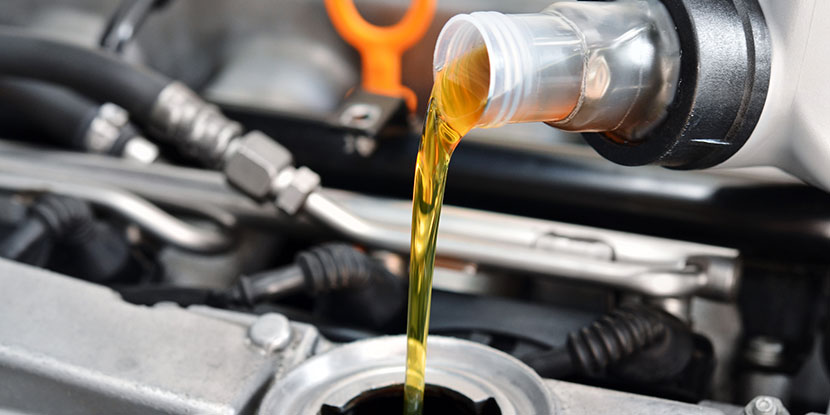Why is a Service History Important?

According to a survey completed by a well-known motoring group a few years ago, being able to access a vehicle’s service history is essential when considering purchasing a used car. Only 20% of people said they would consider buying a car without the service history!
Sellers offering used cars are usually proud to show off that the car has been well maintained, so when there’s missing information or gaps in the record, you have to wonder if something’s being hidden.
But fear not! When you know what you’re looking for, it’s easy to tell which gaps in a car’s service history have a reasonable explanation and when the answer might be something more sinister…
What is a service history?
The service history of a car is a detailed record of all the times a vehicle has been serviced or repaired. This should include information such as who completed the work, when, and what happened.
Newer cars often come with a service book. This allows the owner to record regular services and even includes a space to stamp the book when serviced at a genuine, manufacturer-approved service centre.
Even if there’s no service book, the previous owners should have kept records of any significant changes or repairs and the vehicle’s previous MOT test results. That why it is important to run a service history check before purchasing any used vehicle.
However, paperwork can be easily lost, particularly if it’s an older car with a long history! But this doesn’t necessarily mean the car hasn’t been well looked after during its lifetime.
How can the service history help me when buying a used car?
In a survey of car owners, the vast majority said the service history is either ‘important’ or ‘very important’ when buying a used car. But you don’t need to wait until you meet the seller to find out what paperwork to expect.
Understanding service history acronyms before you hit the ads can help you eliminate sales you’re not comfortable with. And get you ready to ask the right questions if you decide to move forward with the sale.
MDSH/FDSH: Main Dealer Service History/Full Dealer Service History
You’ll usually find these acronyms attached to ads for high-end cars or newer models – and they’re great to see!
MDSH/FDSH notes mean the car was serviced at the intervals recommended by the manufacturer and that the service has been performed at a registered service centre every time.
You will need to see the service book and confirm the entries are genuine, but if everything checks out, you can be confident the car has been cared for in exactly the way its makers intended!
FSH: Full-Service History
This is nearly as good as a vehicle having an MDSH or FDSH. It still means the car has been serviced at the recommended intervals with no major issues. However, some of the visits may not have taken place at manufacturer recommended centres or weren’t recorded in the same way.
When you ask to see the records for a car described as having FSH, you might find some of them are just receipts from garages or are not accompanied by a stamp in the logbook.
This is undoubtedly better than completely missing records, but you will need to do your due diligence and check the records are genuine!
PSH: Partial Service History/Part Service History
This acronym is the advertiser admitting that some parts of the service history are missing. You may need to track down some information about the car yourself or have it checked out by a trusted mechanic before buying.
Whatever the service history advertised with a car, it’s worth running it through a free car check to ensure the records match up. You’ll get details of the MOT history to check against the vehicle’s logs as part of the free service, with much more information available in the premium report.
What’s the difference between major and minor services?
Sometimes referred to as ‘full’ and ‘interim’ services, respectively, these phrases simply refer to the number of items checked and the thoroughness of the service inspection.
The actual items included will vary between garages, but a minor service generally includes:
- Inspection and replacement of any worn parts such as fan belts, filters, and bulbs.
- Checks to the tires, including rotation, balancing, and tread measurement.
- Checking the levels of all liquids and lubricants and topping up or replacing where needed.
A major service will check everything a minor service does but will include additional items such as:
- Checking the entire exhaust system and repairing any holes or wear.
- Checking all connections and moving parts in the engine and replacing any worn parts.
- Replacing the brake and clutch fluid.
- Brake pad inspection and replacement.
- Checks to the gearbox and suspension.
A major service is generally recommended every 12 months (or every 12,000 miles if the car doesn’t see a lot of use). A minor service is recommended every six months (or 6,000 miles).
Are cars without full service history worthless?
The short answer is yes!
Exactly how much do service history gaps reduce a car’s value? Estimates range from 10% to a whopping 30%, but it really depends on what sort of gaps there are and whether they’re indicative of anything being hidden.
While missing service history doesn’t necessarily mean you should walk away from an otherwise good deal, it offers a lot of reassurance – especially if you can fill in some of the gaps yourself!
You can check the MOT history of any car using our free car checking service. So long as the car has passed every MOT and there are no other obvious issues, a few missed service appointments or partial services are unlikely to make the car unsafe.
If you’re thinking of selling your car (now or later), keeping the service history up to date is a great way to add value! As we’ve seen, many people won’t even consider buying a used car without one!
Here’s a quick rundown of some other stats from the motoring survey you might want to keep in mind next time you’re buying a used car – or thinking of throwing away a receipt!
- 54% said they would expect at least 15% off a car with no service history.
- 25% of those said they would expect a 25% discount.
- A used car without a service history would put 75% off buying it.
- 15% said they would consider buying a car without a service history, but only if there was a discount!
Where can I find the service history?
All cars would have their original service book, fully up to date, kept with the vehicle in an ideal world. But that’s not always possible!
Cars listed as having FDSH or MDSH should have their service history recorded in this way – with a stamp and description of the work done for each service as it became due.
Of course, we all know that paperwork gets lost and that many independent garages work to the same standard as approved dealerships. You don’t have to assume a car wasn’t serviced if there’s a stamp missing, and there are things you can do to fill in the gaps yourself.
These days most garages and dealers keep full online records, so as long as there are receipts (or even a list) of services the car has had, it should be possible to get confirmation.
Running our free car check will give you immediate peace of mind on the MOT history of any vehicle. You could also check the vehicle using our premium car check service to compare mileage anomalies, the MOT history, and other details to ensure the records match what the seller is telling you.






